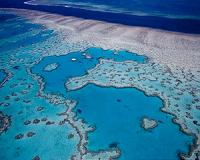| . |  |
. |
Vandenberg AFB CA (SPX) Feb 11, 2011 The Glory spacecraft and its Taurus XL launch vehicle are coming together at Vandenberg Air Force Base in California as NASA gets ready to launch its first Launch Services Program mission of 2011. Researchers are looking for more puzzle pieces to fill out the picture of Earth's climate and Glory was designed to give them the pieces relating to the role tiny particles known as aerosols play in the planet's weather. The spacecraft, about the size of a refrigerator, is also equipped with an instrument to measure the sun's impact on Earth's conditions. Glory is to lift off Feb. 23 at 5:09 a.m. EST. "The Glory satellite will help us understand the interaction of what's called aerosols in our environment," said Chuong Nguyen, LSP's mission integration manager for Glory. The particles Glory will measure are small enough to float in the atmosphere and affect weather conditions by either absorbing sunlight or reflecting it. The particles can also affect rain patterns by seeding clouds and have other effects. The Glory mission is to also find out how long-lasting the effects for aerosols and how far their effects reach. The effects of some aerosols are limited to those parts of the world that generate them. For example, cities in developing nations often produce the most "black carbon," or soot, and it is in those areas that the effects are seen most dramatically, sometimes even in the form of health problems. However, other aerosols including dust from the Sahara desert, reach high enough into the air that they are transported across the oceans. In the case of the Sahara, its dust has been seen in the Caribbean. While the spacecraft will get due attention, many eyes also will be on the Taurus XL rocket that will lift Glory. The four-stage, solid-fueled rocket was last used in February 2009 to launch the Orbiting Carbon Observatory. However, the payload fairing protecting the spacecraft during the early part of launch did not separate and the spacecraft never reached orbit. "Glory is going to do some fantastic stuff as far as mapping out aerosols in the atmosphere, but it's also a groundbreaker in that this is the first flight after a failure of the Taurus XL vehicle," said Omar Baez, launch director for the Glory mission. "So we're excited to be doing this and Glory just happens to be the science that we're taking up with us this time." Compared with other rockets that have launched many hundreds of times, the Taurus XL is quite young and Baez said the trouble with the last launch is part of any new system's growing pains. "We've had a lot of work put into this vehicle so essentially you're flying some systems that you're well aware of," Baez said. "They're brand new but you know them intimately. We'll take out those problems that we had with the failure." Two review boards were established to find the cause of the failure, one by NASA and one by the rocket's maker, Orbital Sciences. When those were complete, the launch team moved ahead with changes and preparations for the Glory mission. "There's physically been people that have been working this one item for two years," Baez said. Glory is launching from the California coast so it can go into a sun-synchronous orbit to scan almost all of the Earth's surface as part of the "A-Train" of Earth-observation satellites already in orbit. Together, Glory, the other spacecraft already in orbit and a future mission called the Orbiting Carbon Observatory-2, the replacement for the original OCO, are expected to give the most complete picture to date of Earth's climate and what makes it change.
Share This Article With Planet Earth
Related Links Glory at Goddard The Air We Breathe at TerraDaily.com
 Speeding Up Mother Nature's Very Own CO2 Mitigation Process
Speeding Up Mother Nature's Very Own CO2 Mitigation ProcessLivermore CA (SPX) Jan 21, 2011 Using seawater and calcium to remove carbon dioxide (CO2) in a natural gas power plant's flue stream, and then pumping the resulting calcium bicarbonate in the sea, could be beneficial to the oceans' marine life. Greg Rau, a senior scientist with the Institute of Marine Sciences at UC Santa Cruz and who also works in the Carbon Management Program at Lawrence Livermore National Laboratory, ... read more |
|
| The content herein, unless otherwise known to be public domain, are Copyright 1995-2010 - SpaceDaily. AFP and UPI Wire Stories are copyright Agence France-Presse and United Press International. ESA Portal Reports are copyright European Space Agency. All NASA sourced material is public domain. Additional copyrights may apply in whole or part to other bona fide parties. Advertising does not imply endorsement,agreement or approval of any opinions, statements or information provided by SpaceDaily on any Web page published or hosted by SpaceDaily. Privacy Statement |